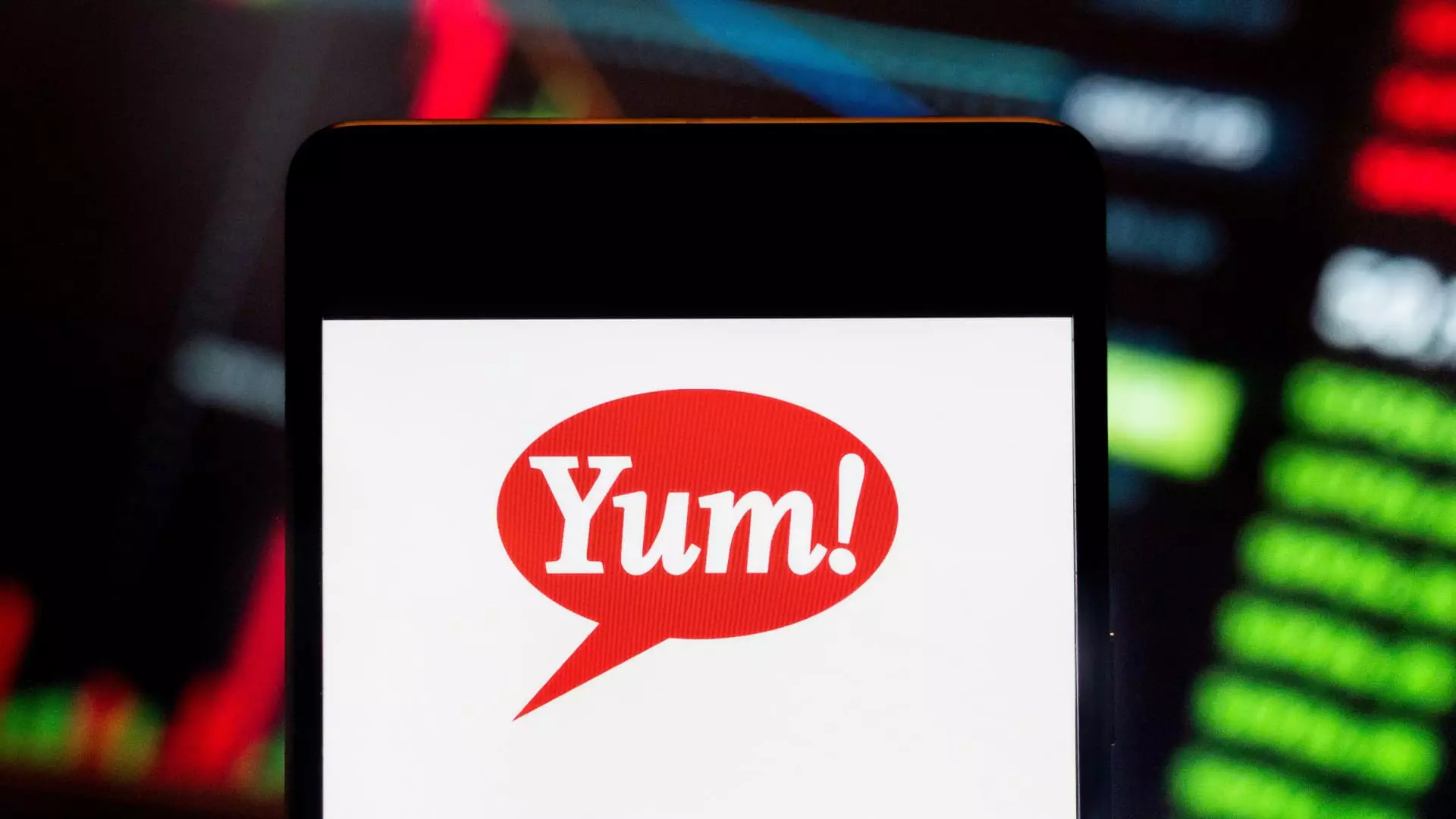Yum Brands Inc. recently unveiled its third-quarter earnings report—a reflection of its ongoing battle within the fast-food market. The corporate behemoth, which houses popular chains like KFC, Pizza Hut, and Taco Bell, has reported a dip in financial performance that has raised eyebrows across Wall Street. This article will delve into the details of their latest quarterly findings, the underlying factors contributing to this downturn, and the strategic shifts the company aims to implement moving forward.
For the third quarter of this fiscal year, Yum Brands reported adjusted earnings per share of $1.37, falling short of the anticipated $1.41. Revenue also fell below expectations, at $1.83 billion compared to the forecasted $1.90 billion. Notably, this marks a decrease in net income to $382 million and a drop in per-share earnings from last year’s $1.46 to $1.35. Despite registering a 7% increase in net sales, the company struggled to convert these numbers into broader sales growth.
This underperformance has been attributed to significant drops in same-store sales, particularly within its flagship brands KFC and Pizza Hut, which experienced declines of 4%. The company’s overall same-store sales fell by 2% worldwide, indicating systemic issues that merit further scrutiny.
David Gibbs, the company’s CEO, noted a “complex consumer environment,” which has fostered marked discrepancies in sales across different regions. Political unrest and fluctuating consumer sentiments have played substantial roles in shaping these results. Specifically in the second quarter, conflicts in the Middle East have adversely impacted KFC, as its same-store sales plummeted by a staggering 45% in several affected markets including Indonesia and Malaysia. These dynamics not only demonstrate the company’s vulnerability but also signal a challenging road ahead in stabilizing the brand’s performance globally.
The challenges are evident in the U.S. market as well, where KFC has seen a 5% decline in same-store sales. This is particularly poignant given that KFC’s position as the second-largest chicken chain in the U.S. has been overshadowed by competitors like Popeyes, which has poached market share over the past year.
Pizza Hut, another integral part of Yum’s portfolio, faced even greater challenges on the international front, reporting a 6% drop in same-store sales. The U.S. operations were relatively stable, with only a 1% decline, but the overall performance raises concerns about the brand’s global strategy. In response to these challenges, Pizza Hut has begun introducing more promotional offers and discounts across markets like China and India, emphasizing the need for a quick pivot in strategy to retain customer loyalty.
In stark contrast, Taco Bell has emerged as a beacon of hope for Yum with a 4% increase in same-store sales. The chain has creatively engaged consumers through product innovation, including popular launches and value-oriented options. The perception of Taco Bell as a cost-effective dining choice has helped solidify its position even amid broader market inefficiencies.
Looking ahead, Yum Brands seems to be prioritizing a stronger focus on value across its chains, especially for KFC, as they navigate a turbulent economic landscape. Gibbs acknowledged the necessity to adapt and respond proactively to market conditions. The emphasis on reevaluating pricing strategies and capitalizing on value perception may provide the company with a lifeline as they strive to regain momentum in a competitive fast-food sector.
Yum Brands stands at a critical juncture. The recent earnings report has illuminated vulnerabilities and raised questions about future growth trajectories amid a challenging consumer landscape. As the company seeks to recalibrate its operational strategies, stakeholders will be closely monitoring the effectiveness of these measures in restoring investor confidence and bolstering brand performance across its franchises.

